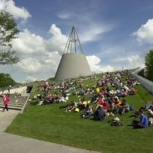
Delft
Located between Rotterdam and The Hague, in the southern part of a Randstad region of 6 million people, the Dutch city of Delft has about 98,000 inhabitants. With a well-preserved historic inner city—Delft became an important centre of trade and crafts in the 16th century—it is a popular tourist destination, thanks also to its museums and famous Delft Blue ceramics. The city is also known for its connections with the Dutch royal family: the founder of the Dutch nation, William of Orange, was murdered in Delft, and other members of the royal family are buried in one of Delft’s main churches. It was also the home of Dutch master Johannes Vermeer, whose life’s work is celebrated in the city.
Delft positions itself as a city of innovation. This is led by the Delft University of Technology, the largest of its kind in the Netherlands, TNO, an independent research body for industry and government, UNESCO/IHE, the Dutch institute for water education, and Deltares, a research and consultancy body for water, soil and subsurface issues. That innovation is also designed to create new high-tech companies, who can turn to Yes!Delft—whose mission is to provide entrepreneurial support and help turn ideas into successful products. Collaboration projects are meanwhile underway with other cities and universities in the Randstad area—under the influence of a newly formed regional development body.
In terms of urban development, the reconstruction of Delft’s station area is the main project. The area will develop into a multimodal and multifunctional hub—a functional mix of living, working and leisure—will also host the new city hall.
SOME RELATED NETWORKS
EUniverCities
UNIC
News

